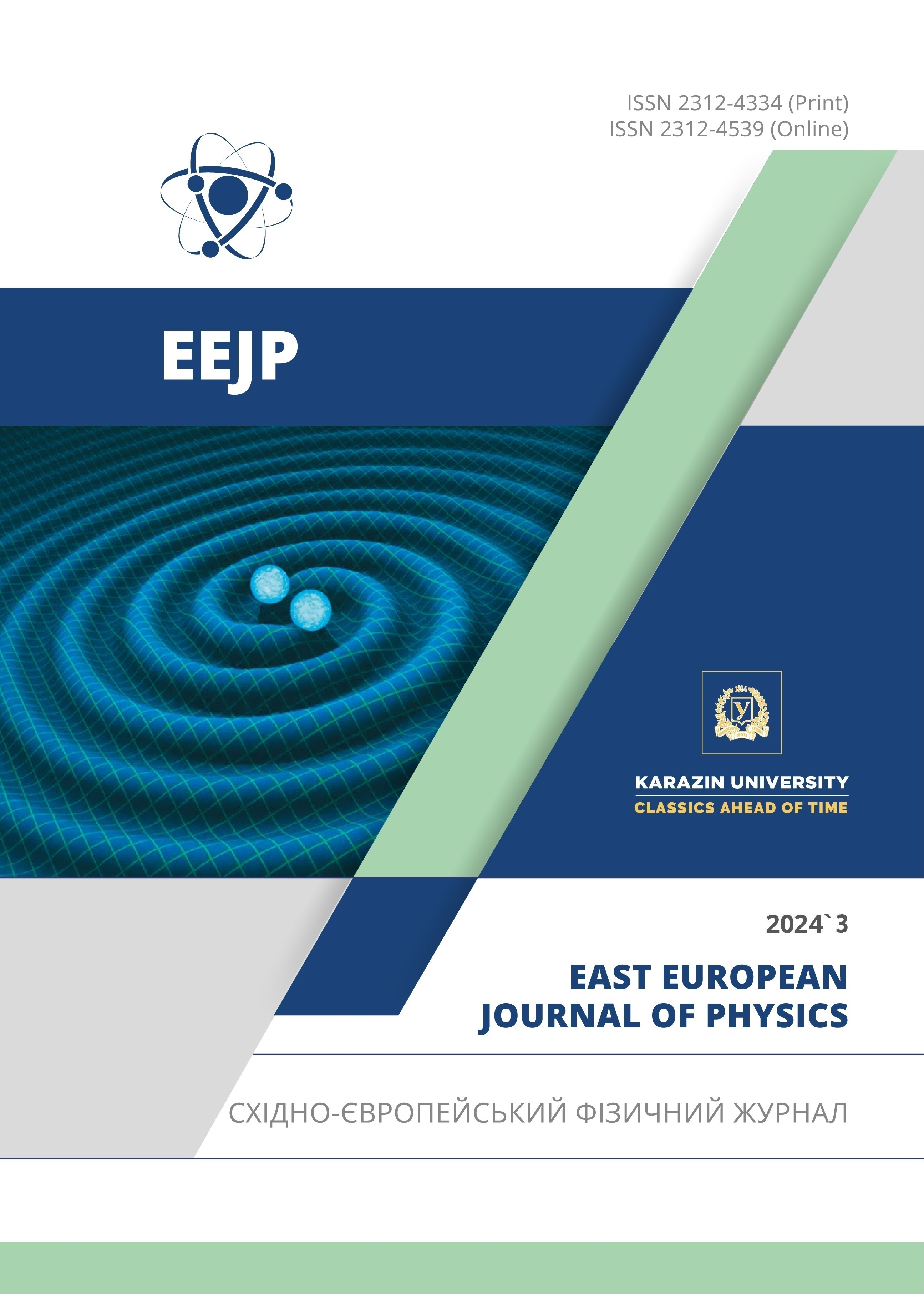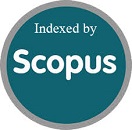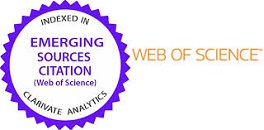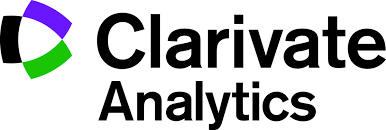Flow of Magnetohydrodynamic Maxwell Fluid in Darcy – Forchheimer Model, With Cattaneo – Christov Heat Flux, Over A Stretching Sheet Subjected to Convective Boundary Conditions
Abstract
This research communication explores the Darcy - Forchheimer flow of a chemically reacting non-Newtonian Maxwell fluid over a stretching sheet, incorporating the Cattaneo – Christov heat flux under a convective boundary condition. The fluid flow is described by a set of partial differential equations, which are subsequently transformed into a system of nonlinear ordinary differential equations. To solve these equations numerically, the BVP4C Method was employed after appropriately defining non dimensional variables and implementing similarity transformations. The impacts of diverse active parameters such as Deborah parameter, Darcy‑Forchheimer parameter, magnetic parameter, Biot number, and porous parameter are examined on the velocity, temperature, and concentration profiles. In addition, the value of the Skin friction, Nusselt number is calculated and presented through tabular forms.
Downloads
References
M.N. Khan, S. Nadeem, S. Ahmad, and A. Saleem, “Mathematical analysis of heat and mass transfer in a Maxwell fluid,” Pro. I. Mech. E. Part C: J. Mech. Eng. Sci. 235(20), 4967-4976 (2021). https://doi.org/10.1177/0954406220976704
K. Sudarmozhi, D. Iranian, I. Khan, A.S. Al-johani, and S.M. Eldin, “Magneto radiative and heat convective flow boundary layer in Maxwell fluid across a porous inclined vertical plate,” Sci. Rep. 13(1), 6253 (2023). https://doi.org/10.1038/s41598-023-33477-5
J. Zhao, L. Zheng, X. Zhang, and F. Liu, “Convection heat and mass transfer of fractional MHD Maxwell fluid in a porous medium with Soret and Dufour effects,” Int. J. Heat Mass Tranf. 103, 203-210 (2016). https://doi.org/10.1016/j.ijheatmasstransfer.2016.07.057
T. Hayat, M. Ijaz Khan, M. Imtiaz, and A. Alsaedi, “Heat and mass transfer analysis in the stagnation region of Maxwell fluid with chemical reaction over a stretched surface,” J. Therm. Sci. Eng. Appl. 10(1), 011002 (2018). https://doi.org/10.1115/1.4024386
M.B. Riaz, M. Asgir, A.A. Zafar, and S. Yao, “Combined effects of heat and mass transfer on MHD free convective flow of Maxwell fluid with variable temperature and concentration,” Math. Probl. Eng. 2021, 1-36 (2021). https://doi.org/10.1155/2021/6641835
C. Bao, L. Liu, C. Xie, J. Zhu, Y. Quan, S. Chen, L. Feng, and L. Zheng, “Analysis of the absorbing boundary condition for the Maxwell fluid flow over a semi-infinite plate with considering the magnetic field,” Comput Math Appl. 154, 212-223 (2024). https://doi.org/10.1016/j.camwa.2023.11.043
M. Yasin, S. Hina, and R. Naz, “A modern study on peristaltically induced flow of Maxwell fluid considering modified Darcy’s law and Hall effect with slip condition,” Alex. Eng. J. 76, 835-850 (2023). https://doi.org/10.1016/j.aej.2023.06.074
D. D. Babu, S. Venkateswarlu, and E. K. Reddy, “Numerical Investigation of Thermophoresis and Activation Energy Effects on Maxwell Nano Fluid Over an Inclined Magnetic Field Applied to a Disk,” East Eur. J. Phys. (4), 326-335 (2023). https://doi.org/10.26565/2312-4334-2023-4-43
Z. Abbas, T. Javed, N. Ali, and M. Sajid, “Flow and heat transfer of Maxwell fluid over an exponentially stretching sheet: A non‐similar solution,” Heat Transf-Asian Re. 43(3), 233-242 (2014). https://doi.org/10.1002/htj.21074
V. Singh, and S. Agarwal, “MHD flow and heat transfer for Maxwell fluid over an exponentially stretching sheet with variable thermal conductivity in porous medium,” Therm. Sci. 18(2), 599-615 (2014). https://doi.org/10.2298/TSCI120530120S
S. Mukhopadhyay, “Heat transfer analysis of the unsteady flow of a Maxwell fluid over a stretching surface in the presence of a heat source/sink,” Chin. Phys. Lett. 29(5), 054703 (2012). https://dx.doi.org/10.1088/0256-307X/29/5/054703
H. Sehra, N. Sadia, A. Z. Gul, and Z.A. Khan, “Convection heat–mass transfer of generalized Maxwell fluid with radiation effect, exponential heating, and chemical reaction using fractional Caputo–Fabrizio derivatives,” Open Phys. 20(1), 1250-1266 (2022). https://doi.org/10.1515/phys-2022-0215
M. Waqas, M.M. Gulzar, W.A. Khan, M.I. Khan, and N.B. Khan, “Newtonian heat and mass conditions impact in thermally radiated Maxwell nanofluid Darcy–Forchheimer flow with heat generation,” Int. J. Numer. Meth. Heat & Fluid Flow, 29(8), 2809-2821 (2019). https://doi.org/10.1108/HFF-11-2018-0695
S. Rashid, M.I. Khan, T. Hayat, M. Ayub, and A. Alsaedi, “Darcy–Forchheimer flow of Maxwell fluid with activation energy and thermal radiation over an exponential surface.,” Appl. Nanosci. 10, 2965-2975 (2020). https://doi.org/10.1007/s13204-019-01008-2
H. Upreti, A. Bisht, and N. Joshi, “MHD Darcy–Forchheimer flow and double-diffusive modeling of Maxwell fluid over rotating stretchable surface: A computational study,” Mod. Phys. Lett. B, 38(27), 2450227, (2024). https://doi.org/10.1142/S0217984924502270
S. Das, A. Ali, and R.N. Jana, “Darcy–Forchheimer flow of a magneto-radiated couple stress fluid over an inclined exponentially stretching surface with Ohmic dissipation,” World J. Eng. 18(2), 345-360 (2021). https://doi.org/10.1108/WJE-07-2020-0258
N.V. Ganesh, A.A. Hakeem, and B. Ganga, “Darcy–Forchheimer flow of hydromagnetic nanofluid over a stretching/shrinking sheet in a thermally stratified porous medium with second order slip, viscous and Ohmic dissipations effects,” Ain Shams Eng. J. 9(4), 939-951 (2018). https://doi.org/10.1016/j.asej.2016.04.019
J. Cui, A. Jan, U. Farooq, M. Hussain, and W.A. Khan, “Thermal analysis of radiative Darcy–Forchheimer nanofluid flow across an inclined stretching surface. Nanomaterials,” 12(23), 4291 (2022). https://doi.org/10.3390/nano12234291
M. Jawad, and K.S. Nisar, “Upper-convected flow of Maxwell fluid near stagnation point through porous surface using Cattaneo-Christov heat flux model,” Case Stud. Therm. Eng. 48, 103155 (2023). https://doi.org/10.1016/j.csite.2023.103155
A. Khan, I.A. Shah, A. Khan, I. Khan, and W.A. Khan, “Numerical investigation of MHD Cattaneo–Christov thermal flux frame work for Maxwell fluid flow over a steady extending surface with thermal generation in a porous medium,” Int. J. Thermofluids, 20, 100418 (2023). https://doi.org/10.1016/j.ijft.2023.100418
K. Rubab, and M. Mustafa, “Cattaneo-Christov heat flux model for MHD three-dimensional flow of Maxwell fluid over a stretching sheet,” PLoS One, 11(4), e0153481 (2016). https://doi.org/10.1371/journal.pone.0153481
A. Shahid, M.M. Bhatti, O.A. Bég, and A. Kadir, “Numerical study of radiative Maxwell viscoelastic magnetized flow from a stretching permeable sheet with the Cattaneo–Christov heat flux model,” Neural Comput. Appl. 30, 3467-3478 (2018). https://doi.org/10.1007/s00521-017-2933-8
S. Islam, A. Dawar, Z. Shah, and A. Tariq, “Cattaneo–Christov theory for a time-dependent magnetohydrodynamic Maxwell fluid flow through a stretching cylinder,” Adv. Mech. Eng. 13(7), (2021). https://doi.org/10.1177/16878140211030152
A. Salmi, H. A. Madkhali, B. Ali, M. Nawaz, S. O. Alharbi, and A. S. Alqahtani, “Numerical study of heat and mass transfer enhancement in Prandtl fluid MHD flow using Cattaneo-Christov heat flux theory,” Case Stud. Therm. Eng. 33, 101949 (2022). https://doi.org/10.1016/j.csite.2022.101949
Copyright (c) 2024 D. Dastagiri Babu, S. Venkateswarlu, R. Hanuma Naik, D. Manjula

This work is licensed under a Creative Commons Attribution 4.0 International License.
Authors who publish with this journal agree to the following terms:
- Authors retain copyright and grant the journal right of first publication with the work simultaneously licensed under a Creative Commons Attribution License that allows others to share the work with an acknowledgment of the work's authorship and initial publication in this journal.
- Authors are able to enter into separate, additional contractual arrangements for the non-exclusive distribution of the journal's published version of the work (e.g., post it to an institutional repository or publish it in a book), with an acknowledgment of its initial publication in this journal.
- Authors are permitted and encouraged to post their work online (e.g., in institutional repositories or on their website) prior to and during the submission process, as it can lead to productive exchanges, as well as earlier and greater citation of published work (See The Effect of Open Access).








